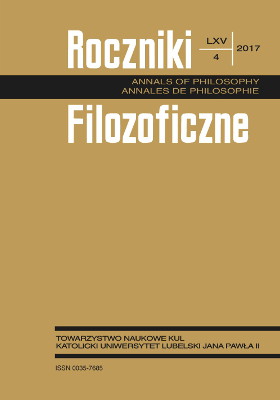Jak dwoje staje się jednym? Pojęcie tożsamości u Pawła Florenskiego
How Two Become One? Pavel Florensky’s Concept of Identity
Author(s): Paweł RojekSubject(s): Philosophy, Special Branches of Philosophy, Philosophy of Religion
Published by: Towarzystwo Naukowe KUL & Katolicki Uniwersytet Lubelski Jana Pawła II
Keywords: Russian philosophy; metaphysics of love; consubstantiality; principle of identity of indiscernibles; bundle theory; trope theory; personalism
Summary/Abstract: Pavel Florensky attempted to formulate an ontological theory of love. He believed that love is not merely a psychological phenomenon but also implies a kind of real unification. Florensky proposed to understand the latter in terms of consubstantiality. Two numerically distinct subjects might become one in virtue of their numerically identical essence. Besides that Florensky sketched an ontological theory based on the distinction between things and persons. It seems that he held a bundle theory of objects, a trope nominalism for things, and a substrate theory combined with realism for persons. Florensky’s view might be therefore taken as a position in the debate on the principle of the identity of indiscernibles. Finally, I suggest that the serious philosophical and theological problems of Florensky’s ontology of love might be overcome by adding to his theory the patristic distinction between essence and energies.
Journal: Roczniki Filozoficzne
- Issue Year: 65/2017
- Issue No: 4
- Page Range: 251-270
- Page Count: 20
- Language: Polish

